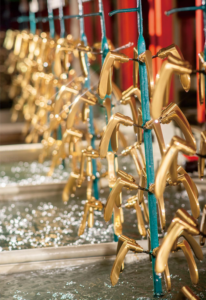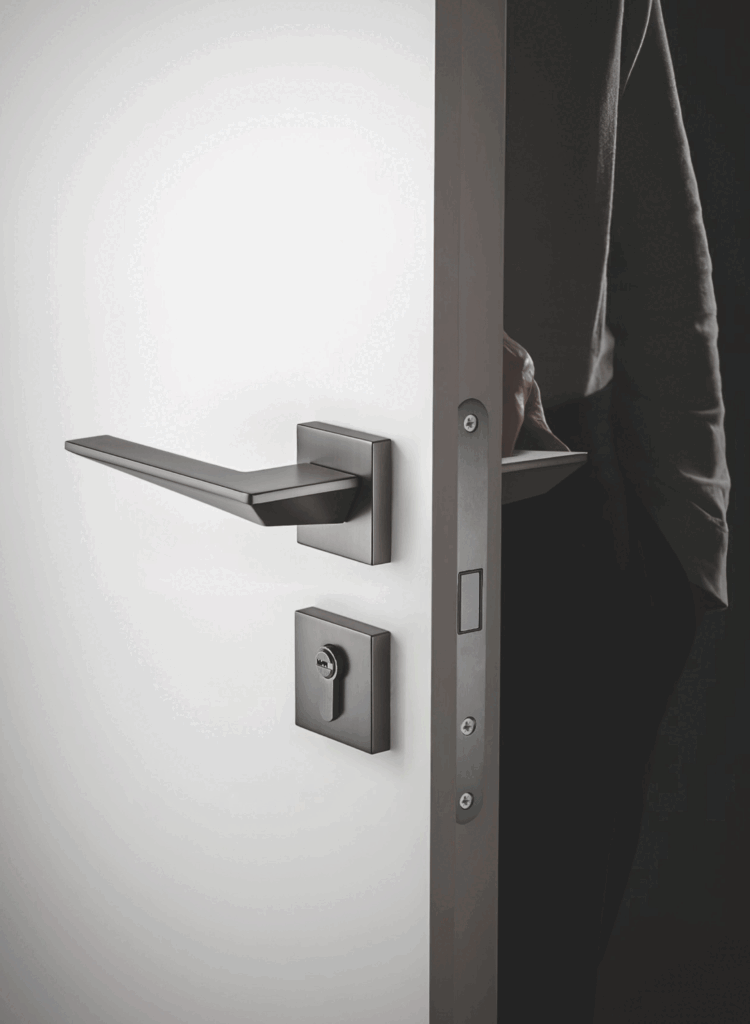Introduction
As a door hardware specialist with over 20 years of experience, I’ve seen countless manufacturing trends come and go. While automation excels in mass production, alloy door handles remain an exception. Their complex craftsmanship often demands human precision. Let me explain why.

The Production Process of Alloy Door Handles
Alloy door handles require meticulous, multi-stage production. Each step impacts the final quality and functionality.
Stage 1: Design & Mold Development
- Custom designs require precise mold creation.
- Alloys like zinc-aluminum need specialized molds.
- Slight errors affect finish and durability.
Stage 2: Die Casting
- Molten alloy is injected into molds.
- Temperature and pressure must be tightly controlled.
- Inconsistencies lead to defects like air bubbles.
Stage 3: Machining & Polishing
- Rough edges are removed.
- Surfaces are smoothed for finishing.
- This stage defines the handle’s tactile feel.
Stage 4: Surface Treatment
- Electroplating, painting, or powder coating is applied.
- Color consistency requires human oversight.
- Coating thickness affects corrosion resistance.
Stage 5: Assembly & Quality Inspection
- Handles are assembled with internal mechanisms.
- Each unit is checked for defects.
- Quality standards must meet international benchmarks.
Machine vs. Manual Polishing: A Critical Comparison

Polishing determines the final appearance and feel. While machines excel in speed, humans deliver precision.
Machine Polishing:
- Speed: High-volume output.
- Consistency: Uniform for simple shapes.
- Limitations: Struggles with intricate designs.
- Risk: Over-polishing can thin critical areas.
Manual Polishing:
- Precision: Craftsmen adapt to complex curves.
- Flexibility: Adjusts pressure for delicate details.
- Quality: Detects subtle defects during the process.
- Value: Adds artisan quality to the product.
Why Manual Wins:
Alloy handles often feature elegant, non-uniform designs. Human polishers ensure curves, edges, and surfaces meet aesthetic and functional standards. For high-end products, this touch is irreplaceable.
Machine Assembly vs. Manual Assembly: The Ultimate Showdown
Assembly is where automation faces its biggest challenges. Let’s break down the pros and cons.
Machine Assembly:
- Pros:
- Speed: Higher output for simple components.
- Cost: Lower labor expenses in large volumes.
- Cons:
- Error-Prone: Misalignments common with complex mechanisms.
- Inflexibility: Struggles with custom or variable parts.
- Maintenance: High downtime for adjustments.
Manual Assembly:
- Pros:
- Precision: Workers ensure perfect alignment of locks and springs.
- Adaptability: Easily handles custom orders and design changes.
- Quality Control: Immediate detection of defects.
- Cons:
- Slower than machines for very high volumes.
- Higher labor costs.
Why Manual Assembly is Superior:
- Complex Mechanics: Door handles often include internal locking systems. Human assemblers ensure smooth operation.
- Customization: Bulk buyers frequently request custom finishes or designs. Manual assembly adapts quickly.
- Quality Assurance: Studies show human inspection reduces defect rates by up to 30%.
- Cost-Effectiveness: For medium batches, manual assembly reduces rework and returns.
Conclusion
While automation revolutionizes many industries, alloy door handles benefit from human craftsmanship. The nuances of polishing, assembly, and quality control require skills machines can’t replicate. At our company, we blend traditional techniques with modern technology to deliver superior products.
For buyers seeking durability, aesthetics, and reliability, manually finished alloy handles remain the gold standard.
Interested in premium door hardware? Contact us for catalogs and bulk pricing!
Share This Story, Choose Your Platform!

